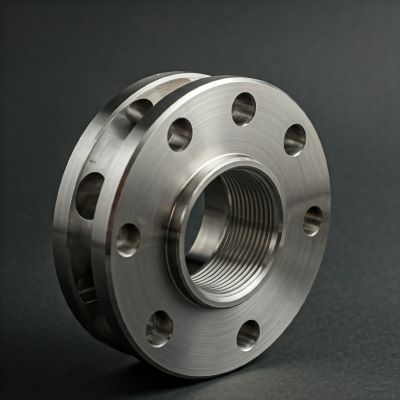ASA flanges are a cornerstone in the world of industrial engineering, providing robust and reliable connections for a wide range of applications. This blog post delves into the key features, applications, and advantages of ASA flanges, highlighting their significance in modern industries.
What Are ASA Flanges?
The American National Standards Institute (ANSI) and the American Society of Mechanical Engineers (ASME) have collaborated to develop the ASA (American Standard Association) standards, which govern the design, manufacturing, and testing of flanges. These standards ensure consistency and quality in the production of ASA flanges, making them a trusted choice for engineers and contractors worldwide.
Key Industries Relying on ASA Flanges
ASA flanges are indispensable components in various industries, including:
➡️ Oil and Gas: Used in pipelines, refineries, and drilling operations to withstand high pressures and temperatures.
➡️ Chemical Processing: Employed in plants that handle corrosive and hazardous substances, requiring durable and leak-proof connections.
➡️ Power Generation: Utilized in power plants to connect pipes and valves in steam and gas turbine systems.
➡️ Water Treatment: Implemented in water treatment facilities to ensure safe and efficient water distribution.
Key Features of ASA Flanges
Material Strength and Durability
ASA flanges are typically manufactured from high-quality materials such as carbon steel, stainless steel, and alloy steel, which offer exceptional strength and durability. These materials can withstand extreme conditions, including high pressures, high temperatures, and corrosive environments.
Precision Engineering for Leak-Free Connections
ASA flanges are engineered with precision to ensure tight and leak-free connections. The flanges are carefully machined to precise tolerances, and the gasket surfaces are finished to provide a smooth and even sealing surface.
Compatibility with High-Pressure Systems
ASA flanges are designed to handle high-pressure systems, making them suitable for demanding applications in the oil and gas, chemical processing, and power generation industries.
Advantages of Using ASA Flanges
Ease of Installation and Maintenance
ASA flanges are relatively easy to install and maintain. They can be bolted together using standard tools and techniques, reducing installation time and costs.
Corrosion Resistance for Long-Term Use
ASA flanges are often made from corrosion-resistant materials, such as stainless steel, which can withstand exposure to harsh environments. This helps to prolong the life of the flange and reduce the need for replacement.
Cost-Effectiveness in Large-Scale Projects
While the initial cost of ASA flanges may be higher than some other types of flanges, they can be more cost-effective in the long run. Their durability and reliability can reduce maintenance costs and downtime, leading to significant savings.
Types of ASA Flanges
➡️ Weld Neck Flanges: Ideal for high-stress systems, weld neck flanges offer superior strength and durability. They provide a sturdy and dependable connection because they are welded straight to the pipe.
➡️ Blind Flanges: Used to cap off pipe ends, blind flanges are solid discs with a bolt hole pattern. They are often used for maintenance or testing purposes.
➡️ Slip-On Flanges: Simple and versatile, slip-on flanges are easily installed by slipping over the end of the pipe and welding it in place.
Factors to Consider When Selecting ASA Flanges
Material Suitability for Specific Applications
The particular use and the surrounding environment determine the material selection for an ASA flange. Factors such as temperature, pressure, and corrosion resistance must be considered.
Pressure and Temperature Ratings
ASA flanges are available in various pressure and temperature ratings. It is essential to select a flange with a rating that is suitable for the intended application.
Compliance with Industry Standards
ASA flanges must comply with relevant industry standards, such as ASME B16.5, to ensure quality and safety.
Maintenance and Best Practices
Inspection Protocols to Ensure Safety
Regular inspection of ASA flanges is crucial to identify any signs of wear, damage, or corrosion. Visual inspections, ultrasonic testing, and other non-destructive testing methods can be used to assess the condition of the flanges.
Cleaning Methods to Prolong Flange Life
Regular cleaning of ASA flanges can help to remove dirt, debris, and corrosion products. Cleaning methods may include water blasting, chemical cleaning, or mechanical cleaning.
Replacing and Upgrading ASA Flanges
If an ASA flange is damaged or worn beyond repair, it should be replaced with a new one. In some cases, it may be possible to upgrade to a higher-pressure or higher-temperature rated flange.
Conclusion
ASA flanges are a vital component in many industrial applications, providing reliable and durable connections. By understanding the key features, applications, and advantages of ASA flanges, engineers and contractors can make informed decisions to select the right flanges for their projects.
With proper maintenance and inspection, ASA flanges can continue to serve as a cornerstone of industrial infrastructure for years to come.
Post time: Nov-26-2024


